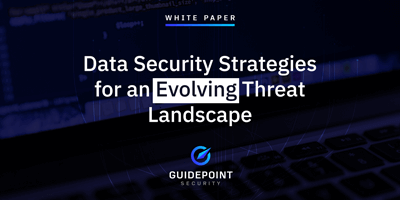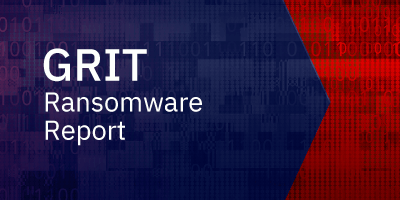What is security analytics? Explore its key roles in threat detection and incident response, shaping the future of robust cyber defense.
From Traditional SIEM to Next-Gen Security Analytics
The shift from traditional Security Information and Event Management (SIEM) systems to advanced security analytics platforms has been driven by an exponential increase in cyber threats and technological advancements.
Early systems, which focused on aggregating and correlating security logs, were soon overwhelmed by the volume and sophistication of modern cyber attacks. The introduction of big data technologies has fortunately enabled the handling of vast amounts of data, providing organizations with the scalability they need for complex IT environments.
The adoption of artificial intelligence (AI) and machine learning marked a further evolution, enhancing the ability to predict and identify novel threats through pattern recognition and behavioral analysis. This transition has led to the development of platforms capable of not only detecting known threats but also predicting and mitigating future ones with greater accuracy, changing the landscape of cyber defense with a single, comprehensive approach to security data analytics.
Core Principles and Components: The Building Blocks
Security analytics, as a comprehensive approach to cyber defense, rests on a few fundamental principles and key components with which they work in tandem:
- Data Aggregation: Centralizes data from different sources to provide a single view of an organization's security posture
- Threat Detection Algorithms: Utilize algorithms to sift through data for potential threats, using rule-based logic and statistical analysis
- Machine Learning: Employs learning from historical data to improve threat detection accuracy and identify complex threats
- Real-Time Response Mechanisms: Facilitates swift actions to mitigate detected threats with real-time analysis, minimizing potential damage
- Integration and Automation: Enhances efficiency by automating processes and integrating with other security systems for a cohesive defense strategy
These components form the backbone of a robust security analytics platform, providing organizations with the advanced tools needed to proactively identify, analyze, and respond to cyber threats.
Maximizing Benefits: Harnessing the Full Potential of Security Analytics
Revolutionizing Threat Detection and Incident Response
Security analytics have revolutionized threat detection and incident response by leveraging big data, sophisticated algorithms, and the power of AI. This advanced approach contrasts sharply with traditional methods that rely on manual analysis and predefined rules, often leading to slower response times and the overlooking of complex threats. The automation of detection and the predictive capabilities of security analytics allow for real-time responses and proactive threat mitigation.
Consequently, organizations can now rapidly isolate and neutralize security breaches, significantly minimizing the window of opportunity for attackers and reducing the overall impact of cyber threats; this marks a huge leap forward for cyber defense experts and their customers, allowing them to enhance the speed and accuracy of their threat detection.
Ensuring Compliance: A Strategic Advantage
With the help of real-time monitoring and advanced threat detection capabilities, security analytics offers regulatory compliance and a strategic advantage to organizations. By employing sophisticated algorithms and machine learning, security analytics grant deep insights into security threats and help organizations preemptively address vulnerabilities and streamline their security operations; this dual benefit of adherence to compliance requirements and the strategic edge in threat intelligence and operational efficiency positions organizations to better protect their most sensitive data.
Forensics and Proactivity: Staying Ahead of Threats
Security analytics plays a critical role in digital forensics and proactive threat detection by offering tools and insights for deep analysis of security incidents and the preemptive identification of threats. Digital forensics aids investigators by providing comprehensive data aggregation, analysis, and visualization capabilities, enabling the reconstruction of events to understand how breaches occurred and to identify the perpetrators.
For proactive threat detection, security analytics utilizes predictive algorithms and machine learning to analyze patterns and anomalies in data, allowing organizations to identify and neutralize threats before they can cause harm. This enhances an organization’s defensive posture and supports a proactive approach to cybersecurity.
Real-World Applications: Security Analytics in Action
Navigating Through Complex Threat Landscapes
Real-time analytics have been instrumental in regulatory compliance and fraud detection for businesses operating in the financial sector. Mortgage providers use technology to make sure that important information is shared with customers, in every interaction reducing the chance of penalties and building trust with consumers.
Additionally, banks employ real-time analytics combined with machine learning to swiftly detect and block fraudulent transactions, showcasing how these technologies are pivotal in navigating threats and maintaining compliance within highly regulated industries.
Behavior Analytics: Decoding the Subtleties of Cybersecurity
Behavior analytics in the cybersecurity arsenal focuses on monitoring and analyzing user behavior patterns to detect potential security threats. Behavior analytics also helps experts and their customers with anomaly detection.
By understanding the normal behavior patterns of users, behavior analytics can flag deviations that suggest malicious activity, such as unauthorized access or insider threats. This capability to detect early signs of compromise enables organizations to respond swiftly to threats, significantly reducing the potential damage from cyber attacks.
Managing Compliance and Risk
Security analytics significantly enhances an organization's ability to monitor, assess, and manage compliance with regulations and industry standards. Through continuous monitoring and the analysis of user behavior and network activity, security analytics tools ensure that any deviations from compliance norms are quickly identified and addressed.
Moreover, the predictive capabilities of security analytics facilitate an advanced risk assessment process, identifying potential threats and vulnerabilities before they materialize. This proactive stance helps maintain regulatory compliance and fortifies the cybersecurity framework against emerging threats, thereby strategically mitigating risks.
Implementing Security Analytics: Best Practices for Maximum Impact
Effective Data Governance
Accurate data collection, data quality, and integrity, alongside stringent data access and security management, form the foundation for effective security analytics; providing reliability of data for effective threat detection and response.
By maintaining high data quality standards and securing access, organizations can trust the insights derived from security analytics, leading to more precise and proactive cybersecurity measures. This framework enhances threat identification and mitigation and supports compliance with data protection regulations to safeguard assets and reputation.
Building a Skilled Security Analytics Team
Crafting an effective security analytics team requires diverse skills that blend data science, cybersecurity, and IT infrastructure knowledge. This diversity allows experts to be well-equipped to tackle complex security challenges from multiple angles. Given the fast-paced nature of cybersecurity, a commitment to continuous learning and adaptability is crucial. Team members must stay abreast of the latest threats, technologies, and defense strategies.
Additionally, the success of a security analytics team hinges on seamless collaboration and clear communication. These elements foster a cohesive approach, allowing the team to utilize their varied expertise in a unified manner. Together, these practices enable the development of a team that is not just technically proficient but also strategically aligned, ready to navigate the intricacies of security analytics and effectively safeguard against cybersecurity threats.
Commitment to Continuous Monitoring
The cybersecurity landscape constantly evolves thanks to the increasing sophistication of cyber threats. As hackers continue to use advanced techniques, traditional security measures are no longer enough to safeguard huge volumes of potentially vulnerable data. This changing landscape necessitates the adoption and continuous refinement of security analytics. Through the use of data analysis companies can enhance their ability to anticipate, identify, and address dangers promptly thereby strengthening their defense mechanisms against contemporary cybersecurity threats.
Navigating Challenges in Security Analytics
Tackling Data Complexity and Volume
To effectively navigate the complexities of the current cybersecurity landscape, organizations face several pivotal challenges that necessitate refined strategies in security analytics. These challenges stem from the need to process and analyze ever-increasing volumes of data, safeguard against more sophisticated threats, and ensure the adaptability of security infrastructures to technologies. Addressing these issues is pivotal for maintaining robust cybersecurity defenses.
- Advanced Data Processing Technologies: Essential for efficiently handling and analyzing the vast and growing datasets characteristic of modern cybersecurity efforts
- Scalable Storage Solutions: Vital for accommodating the increasing volumes of data, ensuring that storage capacity can grow with your organization's needs
- Sophisticated Data Analysis Algorithms: Necessary for identifying complex security threats with greater accuracy, utilizing advanced algorithms to predict and mitigate potential breaches
Amid these challenges, the importance of filtering and prioritizing data becomes paramount for efficient analysis; the integration of AI and machine learning technologies can be instrumental in sifting through large datasets and may provide the means to uncover patterns and anomalies that human analysts might overlook.
Keeping Pace with Cyber Threats
The dynamic nature of cyber threats requires organizations to continually update their security protocols and analytics algorithms. As cyber attackers refine their tactics, security systems must adapt to recognize and mitigate new types of attacks. The role of real-time data analysis becomes critical in this context and can help catch anomalies that may indicate a breach. Predictive analytics and machine learning enhance this capability and enable systems to learn from past incidents and predict future threats with accuracy.
This proactive stance is essential for staying ahead of attackers who continually refine their methods. An agile approach to security analytics is therefore indispensable and demands regular reassessments of threat models and a willingness to adapt to new cybersecurity trends and technologies; Keeping your defenses robust and responsive so you can confidently safeguard your sensitive data and infrastructure.
Integration with Existing Security Systems
The integration of new analytics solutions into existing security frameworks highlights the critical importance of compatibility and interoperability. For organizations to effectively enhance their cybersecurity posture, it's essential that these new solutions mesh with their current systems. Ensuring planning with the support of a group of security professionals such, as those at GuidePoint is crucial, in ensuring that the implementation of new analytics tools does not interfere with current operations or jeopardize data integrity.
Moreover, maintaining data consistency across your security ecosystem is paramount since inconsistencies can lead to vulnerabilities and reduce the effectiveness of your threat detection and response strategies. APIs and other integration tools play a pivotal role in this context and can smoothly facilitate the integration of security analytics solutions.
Network Security Analytics: The Frontline of Cyber Defense
Network traffic analysis scrutinizes the flow of data across a network to identify unusual patterns and security threats like malware infections and unauthorized access. By monitoring network traffic in real-time, organizations can detect anomalies early in their development and before they escalate into full-blown security incidents to minimize potential damage.
Additionally, real-time monitoring helps our security experts observe ongoing activities within your networks to respond to irregularities that indicate a breach. For example, a sudden surge in data transfer to an unknown external IP address could signal data exfiltration attempts by an attacker, while unusual access requests might point to an insider threat or a compromised account.
Leveraging Network Data for Advanced Threat Detection
Various techniques are key in network traffic analysis to enhance cybersecurity measures, including deep packet inspection (DPI), flow data analysis, and anomaly detection:
- DPI examines the data and the header part of a packet as it passes an inspection point, enabling the detection of viruses, spam, and other unwanted content
- Flow data analysis assesses metadata about network traffic flows and helps in understanding network behavior and spotting irregularities
- Anomaly detection uses machine learning algorithms to establish a baseline of normal network behavior, making it possible to identify deviations that could indicate threats like zero-day attacks, advanced persistent threats (APTs), and insider threats
These methods offer enhanced visibility into network activities, allowing our security teams to understand and monitor the flow of data within your networks; they also enable faster response times to potential threats, as they allow for the early detection of unusual activities.
Essential Features for Security Analytics Tools
Security analytics tools stand at the forefront of cybersecurity, armed with machine learning for adapting to new threats, real-time data processing for immediate threat detection, and advanced techniques like behavioral analysis to uncover subtle anomalies. These features collectively ensure a robust defense mechanism, capable of not just responding to, but also predicting and preventing, a wide array of cyber threats, thus securing digital environments against cyber risks.
On the Horizon: Future Trends in Security Analytics
Next-Generation Innovations: AI and Machine Learning
The integration of AI and machine learning into cybersecurity has greatly enhanced threat detection, predictive analytics, and automated incident response; they’ve enabled the sophisticated analysis of large datasets and have helped uncover patterns and anomalies that human analysts might miss.
AI and ML have also facilitated a paradigm shift in cybersecurity strategies from reactive to proactive and preemptive measures. These technologies analyze historical data and current trends to predict potential security breaches before they occur, allowing organizations to fortify their defenses against specific threats. This predictive capability enables security systems to instantly respond to anomalies, potentially stopping attacks in their tracks without human intervention.
This evolution towards AI and ML-driven security analytics may very well be a leap forward in cybersecurity that offers organizations the tools to respond to and anticipate threats, significantly reducing the risk and impact of cyber attacks.
Predictive Security: The Frontier of Cyber Defense
Predictive security harnesses the power of advanced analytics, machine learning, and AI to anticipate potential cyber threats and vulnerabilities before they materialize. Through the analysis of vast datasets— ones that may span network traffic patterns, unusual activity, and historical breach data — predictive models can identify the likelihood of future attacks. These models are designed to accurately predict cyber threats based on the given indicators and can enable organizations to proactively adjust their defenses against dynamic cyber threats.
Advanced Vector Mapping: A New Era of Cyber Intelligence
Advanced vector mapping uses algorithms for a sophisticated analysis of data patterns which enhances threat detection and system vulnerability assessments; it offers a multidimensional view of data and helps identify subtle anomalies and sophisticated cyber threats with higher precision.
By providing deep insights into intricate data correlations, advanced vector mapping significantly improves security analytics, and its predictive capabilities and support for real-time data processing enable a proactive and dynamic approach to threat response. Consequently, advanced vector mapping is revolutionizing security analytics, shifting from a reactive stance to a proactive and predictive security management framework, thereby transforming the landscape of cybersecurity defense strategies.
Embracing the Future of Cybersecurity with Security Analytics
Our experts at GuidePoint help organizations like yours integrate advanced technologies such as machine learning, AI, and complex data analysis techniques for unparalleled threat detection and predictive insights.
To enhance cybersecurity strategies it is essential to utilize real-time data processing and take a stance, on security measures. By adopting security analytics you will be equipped to confidently navigate the cybersecurity landscape safeguarding your organization, against existing and upcoming threats effectively.
As a cornerstone of modern cybersecurity frameworks, security analytics represents a proactive, predictive, and precise method of safeguarding digital assets, and we can help you use it to step forward in the ongoing battle against cyber threats.




























